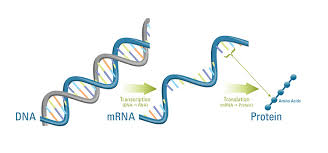Related Flashcards
Cards In This Set
| Front | Back |
|
Systematics
|
This is the discipline focused on classifying organisms by evolutionary relationships
|
|
Taxonomy
|
This is the term for how organisms are named and classified
|
|
Binomial nomenclature
|
This is the two-part format of scientific name instituted by 18th century Linnaeus. The first part is the genus to which the species belongs, and the second is a specific epithet for that species
|
|
Homo sapien in latin
|
Wise man
|
|
Hierarchal Classification
|
This method, founded by Linnaeus, groups species into hierarchy of increasingly inclusive categories. Species that appeared closely related were grouped into the same genus. Higher level classification are usually assigned by morphology.
|
|
Order of hierarchal classification
|
From smallest to largest: species, genus, family, order, class, phyla, kingdom, domain
|
|
Taxon
|
Term for the unit at any level of hierarchy
|
|
PhyloCode
|
Systematists propose classification be based entirely on evolutionary code and relationships, using this.
|
|
Advantage of Phylogenetic tree
|
This is because this represents a hypothesis about evolutionary relationships.
|
|
Branch points
|
These represent relationships depicted as series of dichotomies. Each of these represents divergence of two lineages from common ancestor
|
|
Sister taxa
|
These are groups that share immediate common ancestors; closest relatives to one another
|
|
Rooted tree
|
This is a branch point within a phylogenetic tree that represents the last common ancestor of all taxa on the tree
|
|
Polytomy
|
This is a branch point from which more than 2 descendants emerged
|
|
Limitations of Phylogynetic trees
|
These include its inability to indicate the real ages of a species; not time sensitive unless otherwise indicated.
|
|
Advantages of Phylogenetic trees
|
These include information we can learn. For example, when mapping this for maize, or corn, biologists can track relatives thru ancestry and find genes that may allow for genetic engineering. Also, bioterrorism attempts can be thwarted because these helped trace the source and strain of mailed anthrax.
|







